The yogis have emerged from their meditations to lodge passionate protests. The fitness buffs who’ve turned yoga into a competitive sport and a $6 billion industry in America are dividing into two camps: whistle-blowers and defenders of the faith.

The inspiring Kino MacGregor (http://kinoyoga.com). Photo: Tom Rosenthal (http://lightonashtangayoga.com)
If you were away on a NASA space mission this past week, the uproar is over a New York Times Sunday magazine article (http://www.nytimes.com/2012/01/08/magazine/how-yoga-can-wreck-your-body.html) that claims that yoga as practiced in America poses serious health risks. And they don’t just mean sprained ankles but also torn ligaments, spinal injury, strokes and brain damage.
These claims are being made not just by medical professionals but also by a small handful of experienced yoga teachers. They believe that a number of yoga postures, particularly backbends, headstands and acute spinal twists, are dangerous even when executed properly and by practitioners who are healthy, strong and flexible.
Certain common sequences in yoga which are repeated over and over again – such as those that move between plank pose, upward-facing dog and downward dog – are now claimed to be too risky because they place too much stress on certain joints (in this case, the shoulder) and some teachers have declared they will no longer teach these sequences.
Yoga defenders have lashed out at the data-gathering flaws in the article; they maintain that yoga has healed far more people than it has hurt; they deflect the blame onto our sedentary lifestyle and point to the dangers inherent in American football, skiing, surfing, paragliding, crossing a busy street. They insist that yoga injuries by comparison are negligible. Yoga teachers today are increasingly better educated and more aware of injury prevention; the most inspiring ones, like Kino MacGregor, appear to have a truly organic approach to their practice, using their deep understanding of anatomy to help students enter postures safely. This suggests that students who injure themselves tend to be those who ignore teachers’ advice, who don’t listen to the signals their body is sending them, who approach the practice as a competition to see who in the room can bind and twist more deeply into the postures.
Ballet instructors – a small but courageous community – are circling the wagons, wondering if the guns will be trained next on the practice of ballet. We know that ballet, like yoga, can be an extreme sport. In America, there may actually be more ballet-related injuries than in countries like Russia and France where training is the province of state academies which screen out students at an early age if their bodies are not ideally suited to ballet.
Ballet to the People shares some of her yoga brethren’s frustration. One example – we worry about students who experience lower back ache in arabesque, we counsel them to engage their abs, lift out of their standing hip, we tweak this and that, but the fact that the girls spend most of their waking hours in platform wedges, stilettos, Uggs, flip-flops, Toms, and other shoddy footwear, is likely doing more damage to their postural muscles than the 30 arabesques they attempt each week in ballet.
As we watch the debate over yoga unfold, however, we realize that our students come to us for different reasons than those who take yoga.
The latter are usually seeking some form of therapy, physical and spiritual, or a hot body, like the one in the Equinox ad. So it can be devastating, understandably, to learn that what you thought was therapeutic might actually lead to a stroke. And that the body that you aspire to could at any moment be strapped to a gurney and wheeled into the O.R.
Just in case you’re one of the 3 people left on earth who haven’t already seen the Equinox video, here it is: filmed on the mud floor of a modest hut in an ashram in Uttar Pradesh. Lingerie: Jean Paul Gaultier, from one of his more meditative collections.
Rarely does someone come to ballet class for therapy <cue background laughter> though Ballet to the People would like to remind readers that she did, successfully, at the advanced age of 46.
And if it’s a ballerina body you’re wishing for: you were either born with 180-degree turn-out, a small head, long neck, narrow hips, long legs, and a wide, supple foot with three toes of equal length – or you weren’t. Good ballet training will help you access whatever turn-out God gave you, increase your flexibility, core and back strength and foot articulation, but don’t ask for miracles.
Our students are either pre-professionals or recreational dancers; both groups accept that ballet practice comes with risks. We’re all drawn to the studio by the same thing: the music.
If we actually wanted to EXERCISE, we’d go to the gym.
It’s not surprising that more ballet dancers are gravitating to yoga as a form of cross-training and rehab, with the proliferation of studios offering many different styles of yoga. Should last week’s Times article make them reconsider?
A master yoga teacher offered this perspective in a forum on KQED public radio the other day: yoga, he says, is not about exercise. The fundamental problem in the American yoga community is thinking that yoga is about executing postures, but the postures are really only “tools to help you get more in touch with your body, create more integration, more stability, more range of motion, more ease in your body. Teachers shouldn’t be teaching postures but teaching people,” helping them realize this integration, develop this body awareness.
Can the same be said for ballet? No and yes.
No: ballet is much more of an aesthetic practice than yoga: the movements and postures in ballet have to look right. Feeling right doesn’t count if it doesn’t look right.
Yes: ballet dancers can do what they do – jump, turn, create lovely long lines and hold balances forever on one leg – because they have a highly developed body awareness. A prime example can be seen in this clip of Natalia Osipova executing the famous fouetté sequence from the Don Quixote pas de deux (fouettés start at 8:58).
Being Osipova and not just your run-of-the-mill ballerina, she starts the sequence with doubles. Note that she starts to fall off her balance around 9:15, a malfunction that would fling most people turning at this speed into the orchestra pit. Osipova merely makes a tiny adjustment to her weight distribution and gets herself immediately back into a vertical line over her standing leg.
And yes: one of the key traits of a good yoga teacher is also that of a good ballet teacher – the ability to recognize each student’s capabilities and limitations, make individual corrections and suggest modifications to minimize the chance of injury.
Many corrections in ballet class serve both an aesthetic as well as an injury prevention purpose. When a teacher corrects your sickled (supinated) foot in battement tendu, dégagé or retiré, it’s not only because it’s unattractive and breaks the line of the leg, it’s also dangerous. If you tend to sickle, you risk landing from a jump onto a sickled foot, and the result could be a broken ankle.
Sometimes avoidance is necessary in ballet – just as certain asanas may be necessary to avoid in yoga. Students with certain knee and ankle problems may not be advised to jump, for example. Short of having them skip the allegro portion of class entirely, there are ways to keep an injured student engaged and learning – they can execute the jumping action with one foot at a time, alternating feet, so that they don’t actually clear the ground but work the feet and ankles quickly nonetheless, with some muscular benefit. Or they can stand or sit in one place and execute the port de bras and changes in body facing. Studies of the brain have shown that simply watching a dance sequence and mentally rehearsing it has tangible benefit; it helps to imprint the movement so that when the dancer is ready to participate fully, he is not starting from scratch.
One panelist on KQED reflected on how yoga taught him to pay attention to the signals his body was sending him, years after his experience in competitive sports had taught him to do the exact opposite – to discipline himself to ignore the sensations of the body and push past pain. In Winter Season, Toni Bentley’s unflinching chronicle of her life as a young New York City Ballet dancer, Bentley describes how a dancer is rigorously trained “to separate body and mind.”
The most conscientious teacher in the universe may not be able to change the mindset of a student determined to push himself beyond reasonable limits, or to turn the practice into a competition.
One New York Times reader reacted to the provocative article with this terse one-liner: “They’ll take away my yoga mat when they pry it from my cold, dead fingers.”
I pray this gentleman does not decide to take up ballet and wander into one of my classes.
But ballet students can be equally fanatical. Dancers in America today are increasingly obsessed with achieving extremes – higher jumps, more turns, faster turns, and grotesque hyperextensions, at the expense of stability and classical line – aided and abetted by rock-star choreographers like William Forsythe and Wayne McGregor whose violent contortions of the body (usually the woman’s) risk shortening a dancer’s career. (Europeans are not immune to this, but they have a greater awareness of and reverence for the classical traditions and the lineage of ballet, as evidenced in their dance training.) In America, it was a Russian, George Balanchine, who paved the way, stretching and flattening body lines, lifting and twisting the hip to exaggerate the arabesque, and demanding greater speed in allegro, which can only be achieved by landing jumps without lowering the heels fully to the ground – a practice which carries greater risk of injury. Joseph Mazo, in his 1974 book on New York City Ballet, Dance is a Contact Sport, quoted dancers who admitted that they did not like to take Mr. B’s class because he “sacrificed technique to speed.”

Diana Adams & Arthur Mitchell in George Balanchine's ground-breaking 'Agon', photographed for Ebony magazine in 1959. The lines of the body were beautiful but the technique was definitely not classical.
A characteristic of many diehard yoga and ballet practitioners is their refusal to admit that age brings a progressive deterioration of the body. They believe that their diligent practice will somehow slow down the decline.
On the bright side: there is something to be said for the power of ballet to ward off mental decay. Decades of having to memorize complicated sequences of steps, to reverse combinations without missing a beat, to trace pathways on the floor while changing body facings, to adapt to different time signatures and tempos, to syncopate movement, to understand the precise, mathematical variations on pas de bourrée, waltz steps, pirouettes, entrechats and gargouillades are believed to provide some inoculation against the onset of dementia. As most beginners will tell you, just figuring out which foot to step on next is often a mental challenge. (The answer is usually: the other one.)
While the goal in yoga is to empty the mind so that you can concentrate on the breath, ballet crams so many signals into the brain that your cerebrum resembles the air traffic control tower at John F. Kennedy International Airport on Christmas Eve. It makes sense that dancers are attracted to yoga as a way to decompress, because it is still a very physically demanding practice, which dancers often find easier to adapt to than other forms of relaxation or meditation.
Whether or not yoga defenders succeed in containing the fallout from the New York Times article, it looks like yoga may well be headed down the same path as the more modern and progressive ballet training programs, such as American Ballet Theatre’s National Training Curriculum (NTC). The NTC discourages certain movements which are deemed by the sports medicine community as too risky even for healthy, strong students – such as grand plié in 4th position, rising into relevé through a forced arch, forward bends with a flat back, and the forcing of 180-degree turnout. The NTC also creates an age- and level-appropriate framework for teaching movements safely and progressively, through the gradual mastery of basic “building blocks” of technique.
What ballet can learn from yoga, on the other hand, is that teachers have a responsibility to guide the student toward greater body awareness. This doesn’t mean that we get to ignore academically correct postures, but there are paths to achieving those postures which are gentler on the body than others. Many ballet teachers could do more to offer modifications for students whose body type or physical condition – due to age, injury or chronic illness – may limit their range of motion.
Ultimately, however, injury prevention depends on the mindset of the student and his willingness to put ego aside in his quest to find greater meaning and beauty in life through dance.
It’s tough when you face that mirror in class. Mazo wrote: “it’s there, like the wicked queen’s, to destroy illusion. It’s there to show the dancers exactly what they’re doing, and why it isn’t right. It isn’t enough to be trapped in a windowless rehearsal room, or in your own fallible body, or in the belief that humans can do anything as impossible as classical ballet – you have to be trapped in the mirror, too, and in the myth the audience has dreamed for you: be beautiful, be serene, be shimmering in white with a tiara in your hair.”
Which is why yoga can be a great gift to dancers: it encourages us to stop looking in that mirror, and start looking inward.




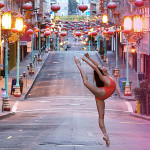
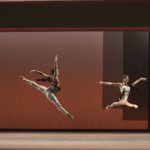
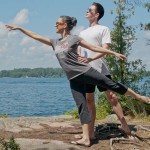
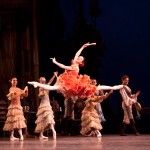
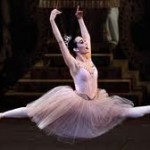
Balanchine-bashing! I don’t get it, you are contradicting yourself….. You previously posted clips from his ballets and wrote a whole post about ‘Apollo’ and I thought that you were a fan. But now you say his technique is dangerous. Does that mean no one should dance it? Are all these dancers around the world who do his ballets injuring themselves?
No, I didn’t mean to contradict myself. You are right, I am a HUGE fan of Balanchine’s ballets. His choreographic genius gave us a whole new way of ‘seeing’ music, and his dances were often architectural and sculptural masterpieces.
That said, certain elements of his style are considered by many teachers and dancers to be NOT ‘best-practice’ so if you had to dance them over and over again, AND on top of that take class using the same principles, you would be at greater risk of injury. This seems to be borne out, anecdotally at least, by several generations of dancers who danced primarily in Balanchine pieces.
Some of his dancers, though, trained with other teachers, which in my opinion is the best way to minimize the injury risk. You get your technique from class, then you go into rehearsal and dance the way the choreographer wants you to dance. I maintain that as long as the technique you learn is clean and classical (and free from the fussy ornamental frou-frou that some teachers throw into their exercises) then you are as safe and as well-prepared as you can be for whatever a choreographer wants to throw at you.
Hi, I haven’t read the article but I wondered if the injuries being referred to where occuring in the corporate franchised yoga classes that are held in gyms. They employ a ‘Yoga Max’ styled pedogogy of no instruction beyond a surface description of the position; fast paced changes of position to keep time with fast paced music.They are risky, and I’m guessing pretty unproductive in terms of increasing flexibility or gaining a satisfying control over your body. I’ll should read the article eh!
Victoria, the type of class you mention is certainly one culprit addressed in the Times article. But the controversy was intensified by two assertions made by highly experienced teachers: 1) that yoga as it is commonly taught is NOT for the general public, that most people have some limitations in their body and if they are to practice yoga at all, they need to practice only sequences designed to address their specific needs, which in most cases means they need one-on-one training, and 2) that some yoga poses and vinyasas are too risky even for the most advanced, healthy practitioners.
Personally I think that gyms and dance studios should be free to offer yoga classes as long as the instructors are well-trained and as long as there is a screening process that students have to go through to determine what program is best for them. If a gym wants to offer a class without screening, then the postures taught really should be very limited… But what do you think?
This is really interesting. I do enjoy the stress-relief and mind-quieting benefits of yoga– for an artist with a touch of ADD and OCD, it can be a wonderful experience to hear nothing in that chattering, creative mind, even if only for an hour or so.
That said, it does cause pain in my shoulders and wrists (especially the Downward Dog). While I have a flexible upper back, my lower back is nearly a no-go when it comes to any sort of backward bending. I can definitely see how someone could injure themselves if they aren’t aware of what they’re doing, or if the instructor doesn’t know them and their limitations well.
The donation-based class I took just this week was interesting because the instructor actually came around to all the students to inquire about injuries or concerns. He also gave students alternatives to the poses he was naming– “Listen to your body: use child pose if you need extra rest.” He certainly seems to be doing his due diligence for a donation-based instructor (props to him! That means he actually cares!). The concern, however, is still that students are going to ignore what their instructor says. I think your idea of having instructors test students to see what level they should be in would be a great way to prevent injuries!
Same “controversy” has occurred with other forms of exercise and fitness when they became trendy…the amateur marathoner comes to mind (as personified by Oprah and other nonathletes), people who are relatively new to distance running who decide to train for a marathon. Some do it smart and survive relatively unscathed, others hurt themselves either through injuries or things as unbelieveable as drinking TOO much water during the race and diluting their electrolytes to dangerous levels. Moderation, slow progression, and good oversight/guidance plus learning to listen to your body is key in any physically demanding activity.
You make great points. However I think that because ballet is more of an art form than simply a fitness regimen, there is the notion that one must suffer in the process of mastery, that there is no real achievement without pushing oneself to an extreme.
On top of that, there is the American myth that you can be anything you want to be if you just persevere. The truth is that the greatest dancers are, almost without exception, born with so much natural facility that they don’t actually have to kill themselves to get to the top. (Which is not to imply that they don’t have to work hard, because they all do – there is no such thing as a lazy, or even a laid-back, prima ballerina.)
It’s nice to find someone that writes about ballet who actually realizes that body type plays such an enormous role in who makes it to the top. Of course it is still hard work and not everyone with a perfect ballet body is going to be a great ballerina. Ballet is a crushing art in that way. Dancers train from an early age and make it their life only to later realize they have no hope of ever being an Osipova or Sylvie Guillem because they just weren’t born with a certain body type. And to think your average Joe who goes to the ballet doesn’t even necessarily see the difference between a “perfect” ballet body and say another in shape but not quite right body.
Another great blog! Great analysis. Also liked,”On the bright side: there is something to be said for the power of ballet to ward off mental decay.” I was thinking of writing something on that myself… so true!
Very interesting article about yoga and ballet.
I’m a ballet dancer and have friends who are both yoga and ballet instructors…I think they’d really enjoy reading this. Going to Facebook share!
Thanks so much, Elizabeth! I’m encountering more dancers who are getting hooked on yoga, which I think is great.